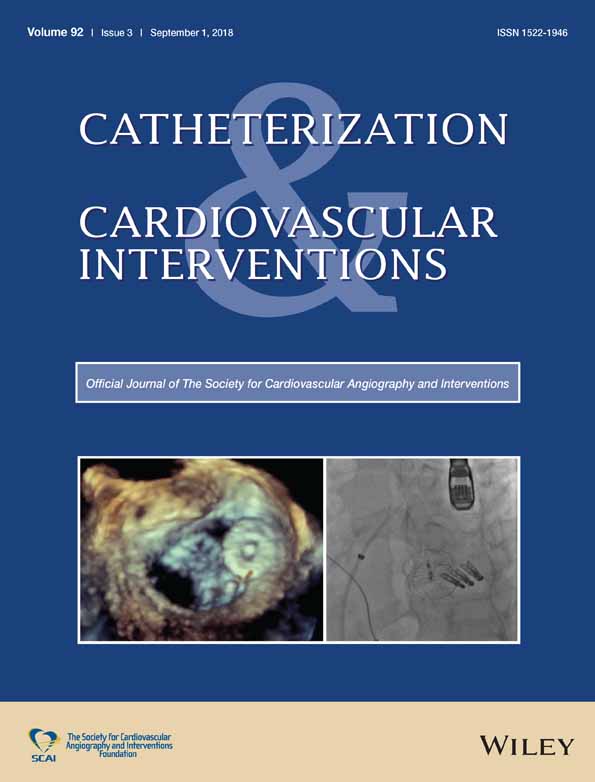Septal reduction therapy using nonalcohol agent in hypertrophic obstructive cardiomyopathy: Single center experience
Abstract
Aims
Percutaneous septal reduction therapy by either alcohol or nonalcohol agents is an alternative approach to surgery in drug-refractory symptomatic patients with hypertrophic obstructive cardiomyopathy (HOCM). Nonalcohol agents have some advantages and disadvantages over alcohol during the procedure. Nowadays, a novel non-alcohol agent, named as Ethylene-vinyl alcohol (EVOH) copolymer (Onyx® and Squid®), is used during septal ablation. Thus, in this study, we aimed to evaluate both acute and long-term efficacy and safety profile of EVOH during septal ablation in HOCM.
Methods and results
A total of 25 patients (52% female; mean age: 55.8 ± 17.1 years) with symptomatic HOCM were enrolled in the study. All subjects underwent clinical and laboratory assessment before and after the procedure. Peak left ventricular outflow tract (LVOT) gradient was significantly reduced just after the procedure (68 vs. 20 mmHg; P < 0.001). Peak serum creatine kinase-myocardial band and troponin I levels were 112 (35–282) ng/ml and 11 (4–93) ng/ml. EVOH embolization to diagonal artery was observed in 1 patient (4%) and the complete atrioventricular block was noted in 2 (8%) patients. During the 12-month follow-up, there was no mortality. There was a significant improvement in New York Heart Association functional class of the subjects P < 0.001). Both interventricular septum thickness and LVOT gradient showed a significant reduction during follow-up (P < 0.05). However, there was no reduction in the LVOT gradient of 3 patients (12%).
Conclusions
In conclusion, our small-sized preliminary study results showed that septal reduction therapy using EVOH is an effective alternative option in reducing symptoms and LVOT gradient in HOCM.
CONFLICT OF INTEREST
None declared.




